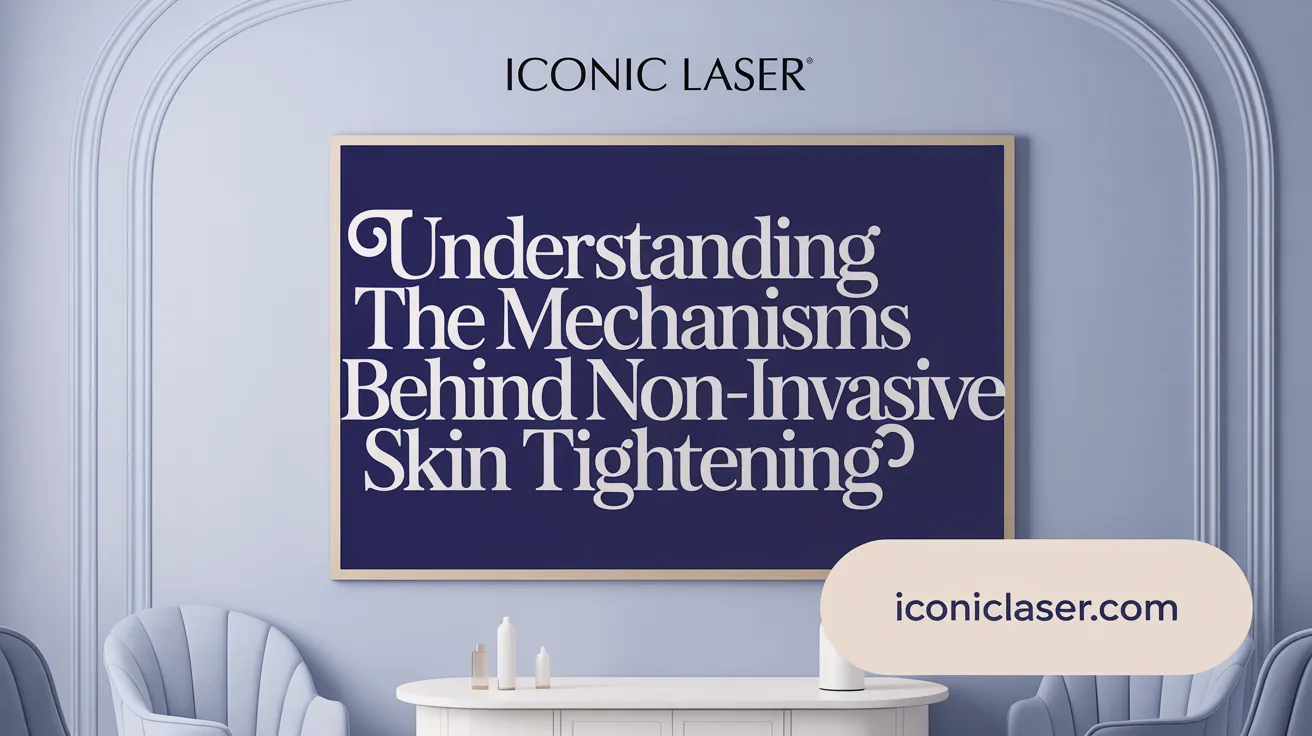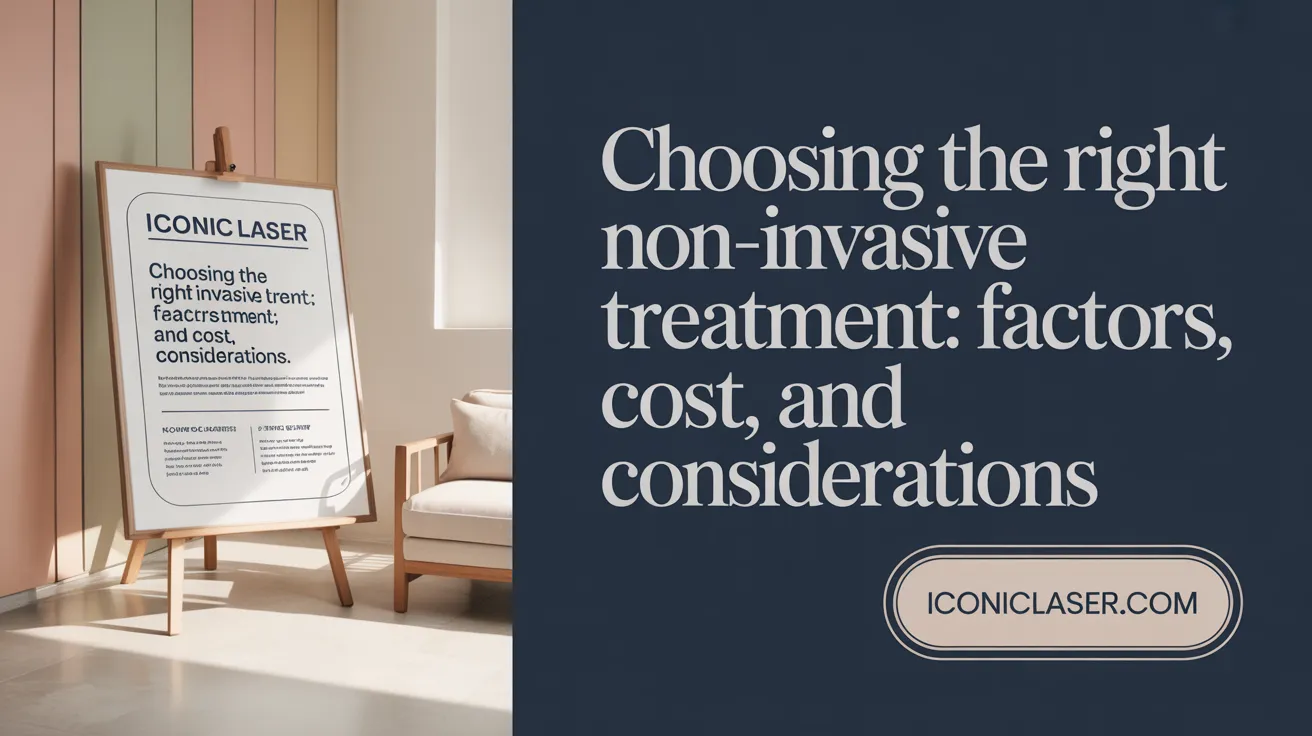Understanding the Rise of Non-Invasive Skin Tightening
As demands for youthful, firm skin grow, non-invasive skin tightening options have emerged as popular alternatives to traditional surgery. These modern treatments harness cutting-edge technologies such as ultrasound, radiofrequency, and lasers to stimulate collagen production and improve skin elasticity without the risks and downtime of surgical procedures. This article provides an in-depth look at these approaches, their functioning, benefits, ideal candidates, and considerations—arming readers with essential knowledge as they explore skin tightening solutions.
What Are Non-Invasive and Minimally Invasive Skin Tightening Procedures?

Definitions and differences between non-invasive and minimally invasive procedures
Non-invasive skin tightening procedures are treatments that use energy-based devices to stimulate collagen production without any incisions or significant downtime. Technologies such as ultrasound, radiofrequency, and lasers fall under this category.
Minimally invasive options, on the other hand, involve small incisions or the use of specialized applicators that deliver controlled heat to targeted tissue layers. This approach slightly penetrates the skin and often results in more pronounced immediate tightening.
Technologies involved such as ultrasound, radiofrequency, and lasers
Ultrasound treatments like Ultherapy® focus ultrasound waves to heat specific depths of the skin, stimulating collagen growth for gradual tightening. Radiofrequency (RF) devices such as Thermage® use electromagnetic energy to heat the deeper skin layers, leading to quicker results and longer-lasting effects.
Lasers, like the Fraxel or CO2 laser, send heat deep into the skin to trigger collagen production, often requiring multiple sessions. Some treatments combine these energies for enhanced outcomes.
Applicability to mild to moderate skin laxity
These procedures are best suited for individuals experiencing mild to moderate skin sagging, early signs of aging, or for skin maintenance. They are less effective for significant sagging, which may need surgical intervention.
Treatment areas and session details
Common areas treated include the face, neck, chin, décolletage, and even parts of the body like the abdomen, arms, and thighs. Sessions typically last from 30 minutes to an hour.
Most treatments are performed in-office with no anesthesia required. Multiple sessions may be recommended, and results usually appear gradually over 3 to 6 months as collagen production increases.
Benefits and general outcomes
Non-invasive and minimally invasive procedures offer a range of benefits:
- Minimal recovery time with patients able to resume daily activities immediately.
- Natural-looking, gradual improvements.
- Usually less discomfort than surgical options.
- Long-lasting results when combined with good skincare and lifestyle habits.
While these methods cannot replicate the dramatic lifts of surgery, they effectively improve skin firmness, texture, and elasticity for those with mild to moderate concerns. Results can last from one to three years, with touch-up treatments helping to maintain outcomes.
How Non-Invasive Skin Tightening Treatments Work

How do non-invasive skin tightening treatments work?
Non-invasive skin tightening procedures utilize targeted energy to stimulate skin rejuvenation in a safe and controlled manner. These treatments primarily employ ultrasound, radiofrequency (RF), or laser energy to reach deep layers of the skin, especially the dermis.
The process begins with delivering focused heat to the deeper tissue layers. This heat causes immediate contraction of collagen fibers, providing an instant tightening effect. Simultaneously, the thermal injury prompts your body's natural healing mechanisms. As the skin repairs itself, fibroblasts—the cells responsible for collagen production—are activated.
This activation leads to increased synthesis of new collagen and elastin proteins, vital components that maintain skin's firmness and elasticity. Over the course of several months, this collagen remodeling results in smoother, firmer, and more youthful-looking skin.
How are different technologies used?
Each technology operates through a slightly different mechanism:
- Ultrasound treatments focus ultrasound energy at specific depths (up to 5 mm) to heat tissue, promoting collagen growth.
- Radiofrequency (RF) treatments use electromagnetic waves to heat deeper skin layers without damaging the surface.
- Laser treatments send targeted heat into the skin, stimulating collagen while also addressing aesthetic concerns like pigmentation.
Some procedures combine technologies, such as IPL (intense pulsed light) with RF, to enhance skin tightening effects across a range of skin conditions.
What are immediate versus gradual effects?
Immediately after treatment, you may notice some skin tightening due to collagen fiber contraction. However, most visible improvements develop gradually over time—typically taking 3 to 6 months—as new collagen forms and existing fibers remodel.
This delayed response allows for natural-looking results that improve in contour and texture with minimal discomfort and downtime. Results are sustained over years, especially with maintenance treatments.
How does tissue respond, and is it safe?
Targeted heating causes controlled thermal injury that the body naturally responds to with tissue repair and new collagen synthesis. These procedures are designed to be safe, with most side effects including mild swelling, redness, or warmth, which resolve within hours or days.
Uncommon risks, such as burns or pigmentation changes, are minimized when treatments are performed by experienced practitioners. Overall, non-invasive methods are regarded as safe, effective, and suitable for many patients seeking skin rejuvenation without surgery.
Popular Non-Invasive Skin Tightening Treatments and Their Benefits
What are common non-invasive skin tightening treatments, such as Ultherapy?
Non-invasive skin tightening treatments have become popular options for those seeking to improve skin firmness without undergoing surgery. One of the most well-known procedures is Ultherapy®, which uses focused ultrasound energy to heat deeper layers of the skin, typically up to 5 millimeters deep. This targeted heating stimulates the production of collagen, a protein vital for skin elasticity.
Ultherapy treatments usually last between 30 to 90 minutes and are performed in-office, with little to no downtime afterward. Patients often notice gradual improvements over three to six months as collagen builds naturally in the skin. It is particularly effective for early signs of aging on the face, neck, chin, brow, and chest.
In addition to ultrasound, radiofrequency (RF) treatments such as Thermage®, Morpheus8®, and Exilis® are widely used. These devices emit electromagnetic waves that heat the skin, triggering collagen synthesis. RF treatments can be performed quickly and comfortably, with results developing gradually over several months.
Some RF devices, like Morpheus8®, combine radiofrequency with microneedling, delivering subtle punctures that enhance collagen stimulation and skin tightening. These combined approaches often produce more noticeable results.
Laser therapies, including fractional laser treatments, target the superficial and deeper skin layers for texture improvement and elasticity. These sessions usually require a series of treatments and have a recovery period of a few days but can result in significant skin tightening.
Another innovative option is Sofwave, an ultrasound-based treatment that promises quicker results at a lower cost compared to Ultherapy. It effectively enhances skin elasticity and reduces fine lines with minimal discomfort.
Benefits of these treatments include:
- No or minimal downtime, allowing immediate return to daily activities.
- Gradual, natural-looking results that improve over time.
- Versatility to treat various areas like the face, neck, décolletage, and body.
- Suitable for mild to moderate skin laxity, especially for those not ready for surgical lifts.
These non-invasive options provide effective ways to lift and tighten skin, helping combat early signs of aging with less risk and discomfort than surgical procedures.
Suitability and Ideal Treatment Areas for Non-Invasive Skin Tightening

Who are suitable candidates for non-invasive skin tightening, and what are the ideal treatment areas?
Candidates for non-invasive skin tightening are typically adults experiencing mild to moderate skin laxity who are looking for a non-surgical way to enhance skin firmness and reduce early signs of aging. These procedures are well-suited for individuals seeking gradual improvements in skin texture and elasticity.
The most common treatment areas include the face, neck, jawline, chin, chest, arms, thighs, abdomen, knees, and buttocks. These areas often show early sagging or fine lines that respond well to energy-based treatments such as ultrasound, radiofrequency, or laser.
To be suitable for these treatments, candidates should be healthy, have realistic expectations, and maintain good skin health. They should not be pregnant or have skin infections, active cold sores, or certain medical conditions that might interfere with healing.
Results from these procedures develop gradually over several months, providing a natural-looking lift and improved skin texture. This minimally invasive approach offers a safe alternative to surgical options like facelifts for those with appropriate skin laxity. Candidates should also follow pre- and post-treatment care instructions, such as sun protection and healthy lifestyle practices, to optimize results.
Comparing Non-Surgical and Surgical Skin Tightening Methods

How do non-surgical skin tightening methods compare to surgical options?
Non-surgical skin tightening treatments have become popular for individuals seeking subtle improvements without the risks and recovery associated with surgery. These procedures utilize technologies such as ultrasound, radiofrequency, and laser energy to heat deeper skin layers, stimulating collagen and elastin production gradually. The results of these treatments develop over several months, providing a natural look with minimal discomfort and downtime.
In contrast, surgical procedures like facelifts or tummy tucks are more invasive. They involve making incisions to remove excess skin, tighten underlying tissues, and sometimes reposition facial or body structures. The effects of surgery are immediate and pronounced, often lasting up to a decade, making them suitable for those with significant sagging or aging concerns.
Recovery and Risks Non-surgical approaches generally require little to no recovery time. Most patients experience mild side effects such as redness or swelling that resolve quickly. These methods carry minimal risk, with rare complications like burns or infections. Surgical methods involve longer recovery periods, often requiring several weeks of downtime. Risks include scarring, infection, nerve damage, and anesthesia-related complications.
Cost and Duration of Results While non-surgical treatments are less expensive upfront, their results are usually gradual and may need maintenance sessions every year or two. Surgical results, though costlier, tend to be longer-lasting—often up to 10 years—due to the removal of excess skin.
Choosing the Right Approach Deciding between non-surgical and surgical options depends on factors such as the severity of skin laxity, personal health, expectations, and lifestyle. For mild to moderate laxity, non-invasive methods may be sufficient, offering a safer and convenient alternative. Conversely, more significant sagging or advanced aging may require surgical intervention for optimal results.
Overall, it’s essential to consult with a qualified specialist who can evaluate individual needs and recommend the best personalized plan, balancing desired outcomes with safety, recovery, and budget considerations.
What to Expect Before, During, and After Treatment
Pre-treatment preparation and consultation
Before undergoing non-invasive skin tightening procedures, patients should first schedule a thorough consultation with a qualified dermatologist or skincare specialist. During this session, the provider assesses skin condition, discusses goals, and reviews medical history to determine suitability.
Patients are advised to avoid sun exposure, tanning beds, and aggressive skin practices like chemical peels or laser treatments in the weeks leading up to their appointment. They should use gentle, hydrating skincare products and steer clear of active ingredients such as retinoids, exfoliants, or alcohol-based toners for several days before the treatment. Staying well-hydrated, protecting the skin from UV rays, and ensuring the skin is clean and free of recent cosmetic procedures help optimize treatment results.
Treatment session details and duration
Most sessions last between 30 minutes to an hour, depending on the treatment area size and technology used. For example, ultrasound treatments like Ultherapy typically take 60 to 90 minutes for facial or neck lifting, while radiofrequency procedures such as Thermage may be around 30 to 60 minutes.
The procedures are generally well tolerated with minimal discomfort; some patients might experience mild sensations of warmth, tingling, or pinch-like feelings during the session. No anesthesia is usually required, and there is little to no downtime afterward.
Post-treatment care and common side effects
Following the treatment, patients may experience temporary redness, swelling, or warmth in the treated area. These side effects generally resolve within a few hours to a couple of weeks. To support healing, it is recommended to avoid excessive heat, strenuous exercise, and direct sun exposure during the initial recovery phase.
Gentle skincare routines, including soothing moisturizers, are encouraged. Patients should avoid using exfoliants or active ingredients like retinoids for at least a week, and keep the skin protected with SPF. Attending scheduled follow-up appointments allows practitioners to monitor progress and address any concerns.
Realistic timelines for visible results
Results from non-invasive skin tightening are gradual. Patients usually begin to see subtle improvements within 2-3 months as collagen production increases. Full effects often become visible around 3-6 months post-treatment. The duration of visible results can vary, with some treatments lasting 1-2 years, especially when combined with good skincare and maintenance.
Importance of follow-up and maintenance
Consistent follow-up appointments are important to assess the skin’s response and determine if additional sessions are needed. Maintaining good skin health, minimizing sun exposure, and following recommended skincare protocols greatly influence long-term success.
Periodic touch-ups, usually once a year, can help sustain their youthful appearance. Engaging in a comprehensive skincare routine, including sun protection and collagen-boosting products like retinoids, can prolong the effects. Adopting a healthy lifestyle, staying hydrated, and avoiding smoking also support ongoing skin firmness and elasticity.
| Aspect | Details | Additional Notes |
|---|---|---|
| Treatment Time | 30 min – 1 hour | Depends on area and technology used |
| No. of Sessions | Generally 1-3 sessions, spaced 4-6 weeks apart | For optimal results |
| Common Side Effects | Redness, swelling, warmth | Typically resolve quickly |
| Results Visibility | 2-6 months post-treatment | Results are gradual and natural-looking |
| Duration of Effects | 1-2 years (with maintenance) | Longer with proper skincare and follow-up |
| Post-treatment Tips | Avoid heat, use SPF, gentle skincare | Supports healing and prolongs results |
Factors Influencing Choice and Cost of Non-Invasive Skin Tightening

What factors should be considered when choosing the best non-invasive skin tightening procedure?
Selecting an appropriate non-surgical skin tightening option involves evaluating multiple factors. Skin type and condition are crucial; for example, ultrasound treatments like Ultherapy® are effective for early signs of aging on the face and neck, heating specific skin depths to stimulate collagen production. Conversely, radiofrequency treatments such as Thermage® or Morpheus8 are suitable for mild to moderate laxity across various areas.
The treatment area and desired outcome also influence the choice. For mild sagging or wrinkle reduction, laser or ultrasound options may suffice, while larger areas like the abdomen or thighs might require different approaches.
Downtime, safety, and patient comfort are important considerations. Most FDA-approved procedures have minimal downtime, with common side effects including redness and swelling that resolve quickly. Safety profiles vary, with some minimally invasive options involving slight discomfort or temporary side effects, and practitioners’ expertise ensures optimal results.
Budget plays a role too. Some treatments range from $600 to over $5,000 per session, depending on the technology and size of the area treated. Conducting a detailed consultation with a qualified dermatologist ensures personalized planning, maximizing benefits while considering individual skin characteristics and goals.
How do cost and affordability vary among non-invasive skin tightening options?
Cost differences among treatments like Ultherapy®, Thermage®, Fractional lasers, and CoolSculpting depend on several factors, including the treatment area size, technology used, and geographic location. For instance, CoolSculpting typically costs between $600 and $1,000 per session, mainly targeting fat reduction but also providing some skin firming benefits.
Thermage® treatments generally involve higher costs, ranging from $1,000 to $5,000. Larger areas or multiple sessions tend to escalate expenses. Most patients undergo 3 to 6 sessions to see significant improvements, which can add up financially.
Clinics with advanced equipment or experienced practitioners often charge more, but they may also offer bundled packages or promotional discounts. While non-invasive procedures are generally more affordable than surgical options like facelifts, prospective patients should evaluate the total number of sessions, associated costs, and available financing or payment plans.
Understanding the total investment required helps patients make informed decisions aligned with their budget and aesthetic goals.
| Treatment Type | Approximate Cost per Session | Typical Number of Sessions | Notes |
|---|---|---|---|
| Ultherapy® (Ultrasound) | $2,000 - $4,000 | 1 | Non-invasive, effective for early aging signs on face and neck |
| Thermage® (RF) | $1,000 - $5,000 | 1-2 | Suitable for mild to moderate laxity, results develop gradually |
| Fractional Laser (CO2, Halo) | $1,500 - $4,000 | 3-5 | Requires some downtime, effective for mild sagging and fine lines |
| CoolSculpting | $600 - $1,000 | 1-3 | Also used for fat reduction, stimulates collagen, minimal downtime |
| Morpheus8 / Favored RF | $2,000 - $4,000 | 3-4 | Microneedling combined with RF, improves skin texture and tightness |
This overview helps in understanding how costs can vary based on technology, area treated, and individual needs, assisting patients in making informed and affordable choices.
The Future of Skin Tightening without Surgery
Non-invasive skin tightening has revolutionized aesthetic treatments by providing safe, effective, and convenient alternatives to traditional surgery. By harnessing advanced technologies such as ultrasound, radiofrequency, and lasers, these procedures offer gradual, natural-looking improvements suitable for mild to moderate skin laxity. Patients benefit from minimal downtime, reduced risk, and the ability to treat various areas of the body with personalized care plans. While these methods may not replace surgical lifts for severe sagging, they serve as valuable tools for skin rejuvenation and maintenance. As technology continues to evolve, non-invasive skin tightening will likely become even more accessible and effective, empowering individuals to achieve a more youthful appearance with greater ease and confidence.
References
- Non-Surgical Skin Tightening
- Non-Surgical Skin Tightening Cost and Procedure Guide
- Many ways to firm sagging skin
- Non-invasive Skin Tightening Treatments
- A Guide to Non-Surgical Skin Tightening Procedures
- Non-Surgical Skin Tightening vs. Surgery: What's the Best ...
- Non-Surgical Skin Tightening
- 8 best non-surgical skin tightening treatments for firmer skin
